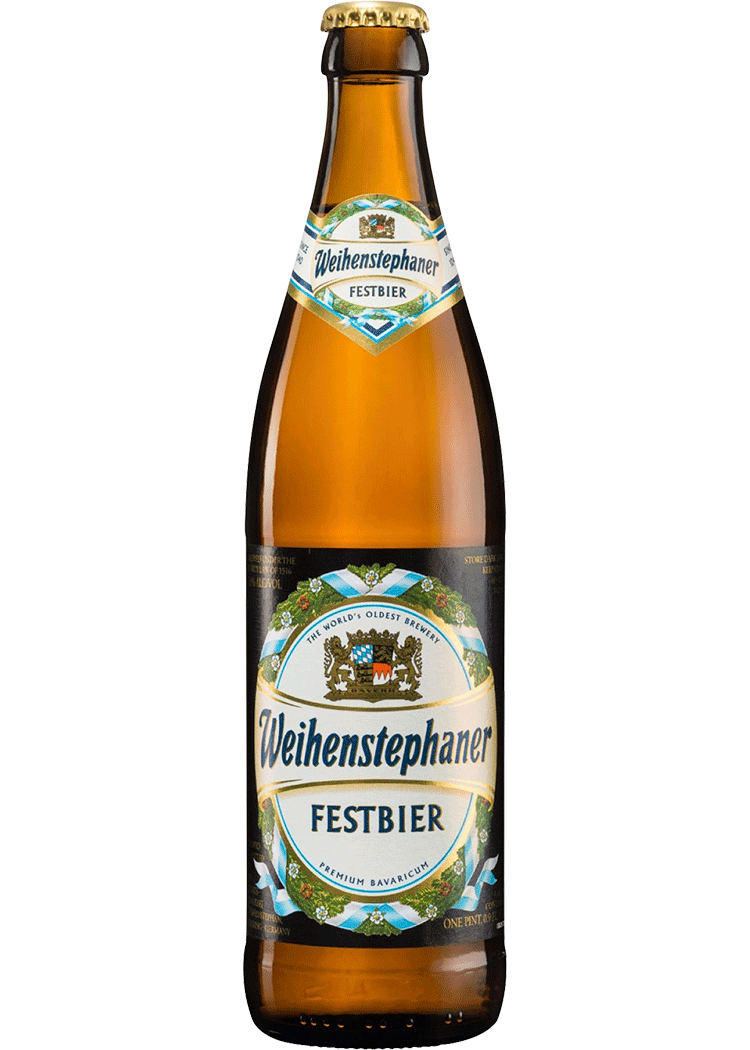tap to enlarge
Weihenstephaner OktoberFestbier
16.9oz Btl
$4.49
+CRV
*Price, vintage and availability may vary by store.
*Price, vintage and availability may vary by store.
Product Highlights
Germany- Marzen/Festbier - 5.6% ABV. PROST! Brewed for Festbier season in Germany, this rich hoppy seasonal has a great mouthfeel with lots of flavor. A hoppy lager, deep gold and full-bodied truly represents the Bavarian way of celebrating.
Product Details
OVERVIEW
Beer Type
Derived from the Vienna style, Märzen and Oktoberfest beers can offer similar flavors and feel. Known as Märzenbier, German for “March beer,” this German lager was developed in the 1840s, before refrigeration. It was traditionally brewed in the spring and stored in cool cellars for consumption over the warmer summer months. Remaining supplies of Märzenbier were then consumed during Oktoberfest celebrations. The color ranges from clear, deep gold to orange-red, with a foamy, off-white head. Vienna and/or Munich malts contribute to the darker hue and characteristic toasty malt sweetness of Oktoberfest beers, and background Noble hop bitterness keeps them from being cloying. With malt character potentially rich and complex, the best Oktoberfest beer exhibits a clean, smooth lager character. While some are available year-round, most beers of this style are only available seasonally to ring in the fall months.
Producer Story
Beer has been brewed on site of Germany’s Bayerische Staatsbrauerei Weihenstephan (the Bavarian State Brewery at Weihenstephan) for approximately 1,000 years, so Weihenstephan has a good claim on being the oldest brewery in the world. It began as a monastery brewery, duly recorded when the abbot received a license from the city of Freising to brew and sell beer in 1040. It was the beginning of a long brewing legacy amid challenges that spanned centuries.
Between 1085 and 1463, the Weihenstephan monastery burned down completely four times and was destroyed or depopulated by three plagues, various famines and an earthquake. Each time, the monks rebuilt the monastery and brewery and continued to refine their brewing art. What these natural disasters could not take away, the state of Bavaria did in 1803 when, in a wave of secularization, it dissolved the monastery and repurposed its buildings. The brewery, however, remained, operating under state supervision.
In 1852, Bavaria’s Central Agricultural School and its brewing students moved to Weihenstephan. The school became the University of Agriculture and Brewing in 1919 and then the Bavarian State Brewery at Weihenstephan two years later. By 1930, it was incorporated with the Technical University of Munich and became the center of world brewing technology.
Despite Weihenstephan’s likely status as the world’s oldest brewery, it is also one of the most modern, with a unique combination of tradition and state-of-the-art science contributing to its top-quality brews. Weihenstephaner beers include Weihenstephaner Original (Munich Helles Lager), Korbinian (Doppelbock), Kristall Weissbier, Hefe Weissbier, Hefe Weissbier Dark and Vitus.
Source: Brauerei Weihenstephan
